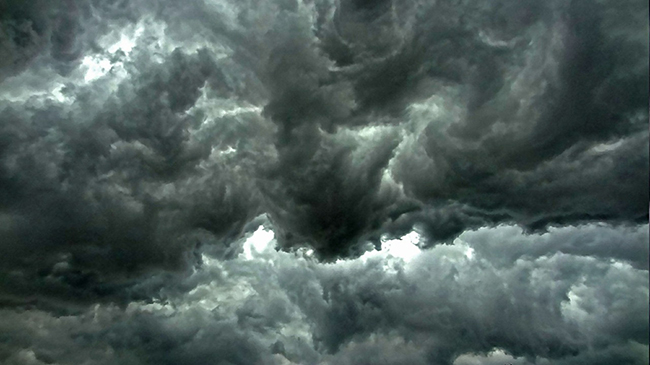
The history of human response to disasters has relevance to the present and future.
By Steven Krolak
On Aug. 31, 2005, Air Force One, carrying then President George W. Bush from a month-long vacation on his Texas ranch to the White House, flew over the city of New Orleans, which was reeling from a hurricane named Katrina that had struck two days before. Photos taken aboard the plane showed the president looking down upon the devastation through one of the cabin windows, before the plane resumed its flight to Washington, D.C.
In the aftermath of the flyover, the president was criticized for being distant, uncaring and unresponsive, and his job approval rating tumbled.
The case illustrates the power of disasters not only to destroy infrastructure, but also to rattle the halls of power and shape the course of human history.
Katrina is one of the many catastrophic events covered in Dr. Quinn Dauer’s special topics course, Disasters in Modern World History. Others include earthquakes in Europe, Asia and South America, hurricanes in the Caribbean and El Niño/La Niña cycles in the tropics.
Despite the ferocious material, the course is not a mere storm-chaser highlight reel, but rather an exploration of many facets of our relationship with extreme conditions.
“The course is about how cultures, societies, peoples and states respond to natural and technological disasters,” Dauer said. “It dovetails with how other disciplines, like emergency management and preparedness, approach these events.”
One of the course’s goals is to clear up misconceptions about disasters.
Given the almost routine inevitability of seismic and climactic events, it takes humans to make them something extraordinary.
“Disasters are not natural,” said Dauer. “Humans, in the way they have built their environment, create the conditions for disaster.”
Viewing history through the lens of disasters is relatively new, Dauer explained, dating to the 1950s, when the U.S. government began funding research into the likely social effects of nuclear war.
Charting the impact of hurricanes, earthquakes, tsunamis on science, philosophy, religion and national identity, Dauer’s course makes clear that disasters can reveal a lot about who we are – and lead to some surprises.
“The research tells us that people don’t act in mass panic and chaos after a disaster,” Dauer said. “People generally come together as a community.”
Using climate data borrowed from the natural sciences, the historical view can also open the door to new questions about the causes of social and political change.
—Did the outpouring of relief efforts for Sicilian earthquake victims in 1908 help to unify the young Italian nation?
—Did Kanto earthquake of 1923 contribute to the rise of Japanese nationalism?
—Did Caribbean droughts in the 1760s, driven by El Niño, enable American colonists to build export markets there and thus to finance the Revolutionary War?
In some places, disasters and the response to them have shaped the collective mentality in a positive way.
For example, Dauer notes that in Chile and Japan, acceptance of the inevitability of earthquakes has inspired a “culture of disaster” that is reflected in building practices and civilian training, which helps these societies move through recurrent seismic events with their institutions intact.
Whether disasters lead to the collapse of civilizations, such as the Mayan empire, or are accepted as routine by modern societies versed in emergency preparedness, they make for fascinating and revealing case studies. And as El Niño ushers in 2016 with flooding in California and the Midwest, the history of the human response to disasters has direct relevance for our own time.
“The historical approach gives students the understanding that disasters aren’t simply abnormal one-offs that strike from out of the blue,” Dauer said. “These events are usually just part of life on earth.”


